Tou Pils: Circa 1975
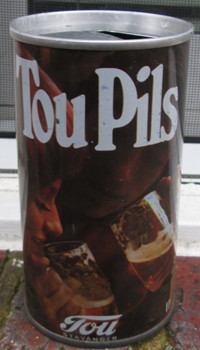 |
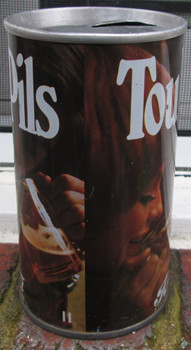 |
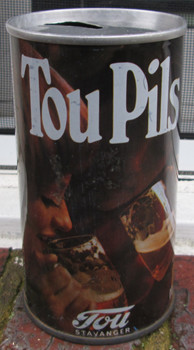 |
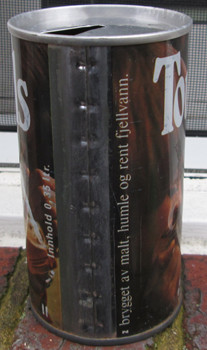 |
This month let's look at a fairly common can from Norway, a Tou Pils. I like it because it has a photo of a happy couple drinking on the can. There are a number of European cans with this type of design. Why did American brewers not do this? That's what I want to cover this time.
American breweries were very careful about their advertising after Prohibition ended in 1933. The Temperance Movement did not just give up when the 21st Amendment was passed and ratified that year. They continued to insist that Prohibition had been successful and should be reinstated. In hindsight it seems ludicrous for the breweries to be worried, but at the time they were. They still used pretty girls in their advertising, but they tended to be a bit tamer than some of the pre-prohibiton material. The Brewers Association, the main industry trade group, ran a series of advertisements in the "Beer Belongs" campaigns, starting in the 1930s, and running through the 1950s. The ads, which ran in national magazines, showed groups of (always white) friends and family in healthy middle-class activities, such as watching a baseball game on an early TV, having a picnic, celebrating a birthday, or just having fun. After the Second World War the ads ran with full color artwork that had a Norman Rockwell touch. The people in the ad were always adults, with no-one under legal drinking age appearing. They are often holding a beer, or being served beer, or even slightly raising a beer towards their mouth. Very few actually showed someone drinking the beer, and then it was usually a person in the background or to the side, and not as the focus for the viewer's eye.
Someday I want to compare the ads to the Meister Brau "Happy Days" series and similar designs and look at what the activities couples are enjoying in both and what the designers' choices say about middle class suburban life in the US in the 1950s, but that's in the future. For now, I just want to note that if the brewers showed someone actually drinking their product in advertising, they made sure that the setting and people were "respectable" and not the rowdy disreputables you'd see in a pre-prohibiton saloon, at least according to prohibitionist publications.
Europe
Europe did not escape the Temperance Movement either. Russia and Canada went "dry" before the US did. The Scandavian countries tried various forms of temperance laws as well. Norway was dry from 1916-1927, and I discussed Sweden's system in my November 2017 COM. However, European brewers, at least in the 1970s, were more willing to show people enjoying beer on their labels. Usually, as you'd expect, the people are generally young, good-looking, and "respectable" in appearance. That makes sense even without fear of a temperance campaign. Who would want to buy an alcoholic beverage with a photo of a drunk frat boy passed out in a pool of his own sick? (Actually, at least one micro beer has a label with brown-stained underwear on it, so who knows. Maybe gross labels will sell now)
The French were, in at least one case, willing to show people drinking in a rowdy atmosphere. The label for Pelworth Pale, which I discussed in February 2017, is based on a classic painting by Flemish artist Pieter Bruegel the Elder, so it gets a pass because "it's art!"
Most of the designs I've seen like this are on the big "Party Cans" such as the Pelworth, so it makes sense to have a party theme ont he label. But there's not a large enough sample size to really make a judgment of if that is a significant difference. At any rate, this month's can is a .35 liter, apx 12 oz's.
Variations
There are two variations that I know of (thanks to the One Can, One Country Chapter of the BCCA). There is this Export can, and one like this, except it is blue and says "Pislner." Both are much harder cans to find than the one pictured up top. (Photo used with permission)
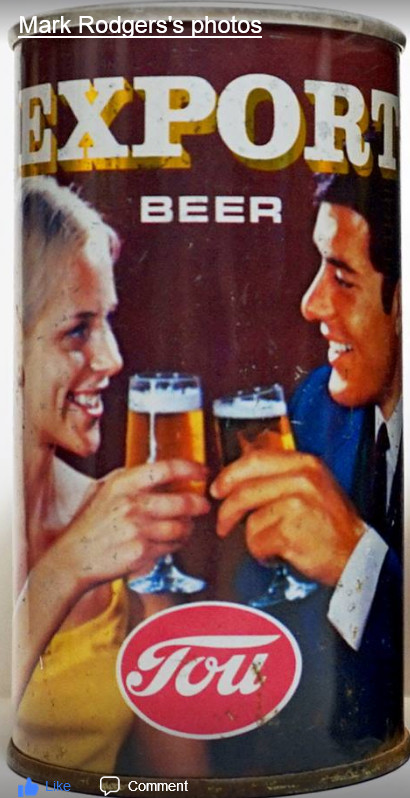 |
Tou
Tou brewery started producing beer and flour in 1855 at Tau outside Stavanger, a city in south-west Norway. In 1901, the production of beer was moved to Lervik just south of Stavanger. In the 1970s the production was again moved to new facilities in Forus, which is a bit further south. Tou merged in 1990 with Nora Industrier and became part of Ringnes. In August 2003, Ringnes closed the brewery, despite strong local protests. Production was moved to Oslo.
Just to help you orientate where these places are, a couple maps. Unfortunately the can only says it comes from Tau in Stavanger, not which of the three brewery locations. This isn't really that important, but when I see a city name I do not recognize on a non-US can I always wonder just where that place is.
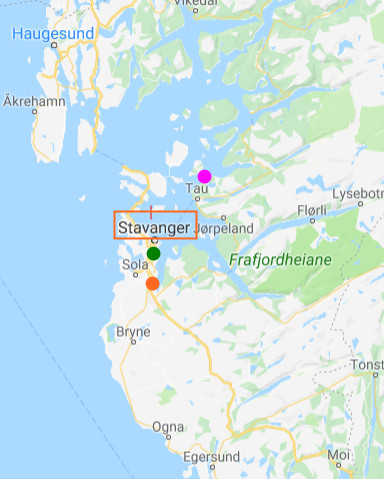 |
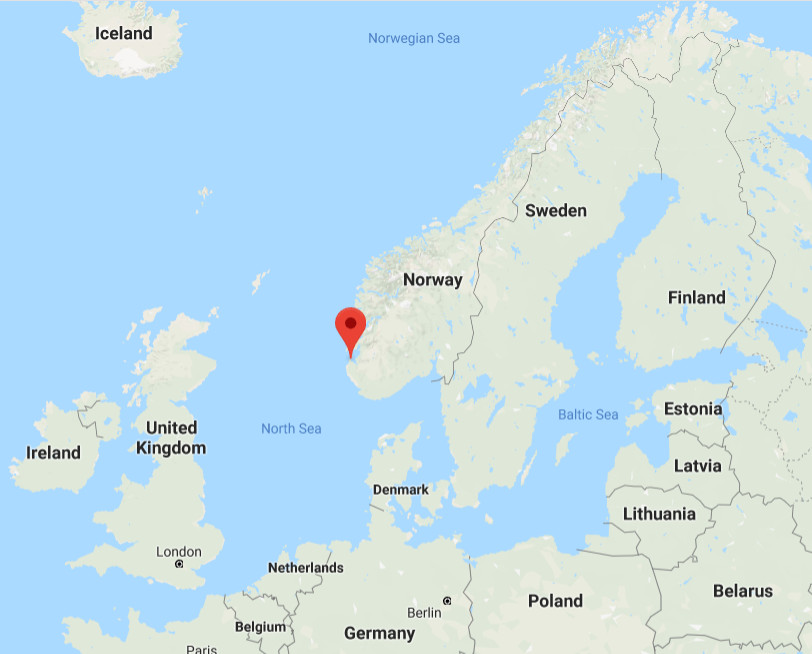 |
South-Western Norway. Stavanger is marked with a red box. The original brewery location was at Tau (just below the pink dot), then moved to Lervik (green dot), and then to Forus (orange dot). |
The big red Google map pointer is pointing to Stavanger. |
The side reads: "brygget av malt, humle og rent fjellvann" which translates to "brewed with malt, hops and pure mountain water." Just in case you were wondering.
British Set
Another set with this type of design from the same era are the Watney's Four and Watney's Seven cans from Britain. I have three of them and need two more to have the basic (not counting variations) set. The label features artwork rather than photos, but it's still happy "respectable-looking" young people enjoying beer. There are a lot of other examples from Europe.
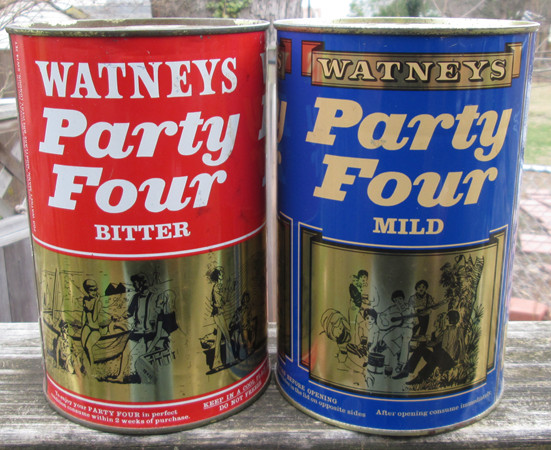 |
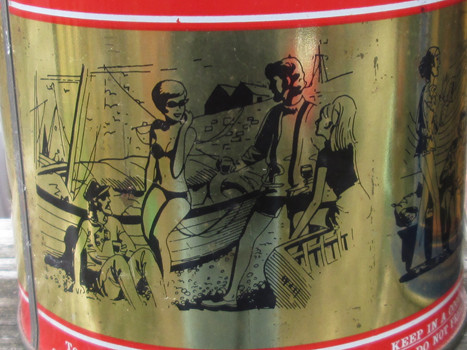 |
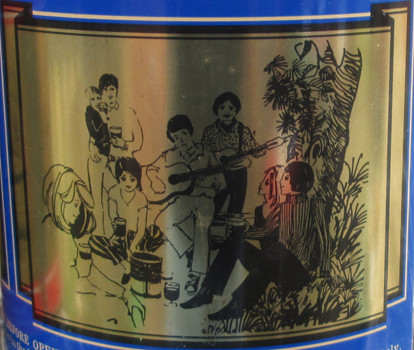 |
There are also different variations for each can, as seen in the photo below (taken from eBay.)
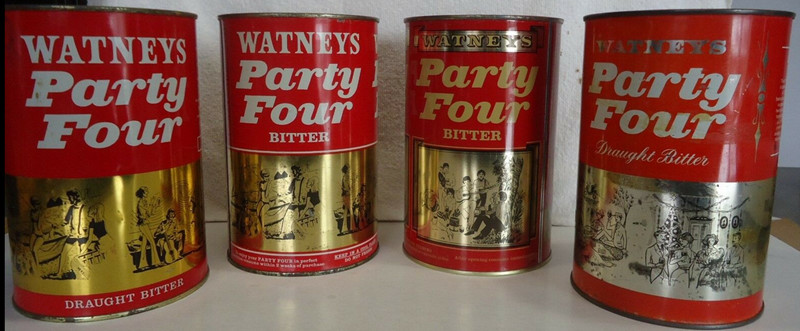 |
Thank you to the BCCA Chapter One Can:One Country for their help! (link opens new window)
